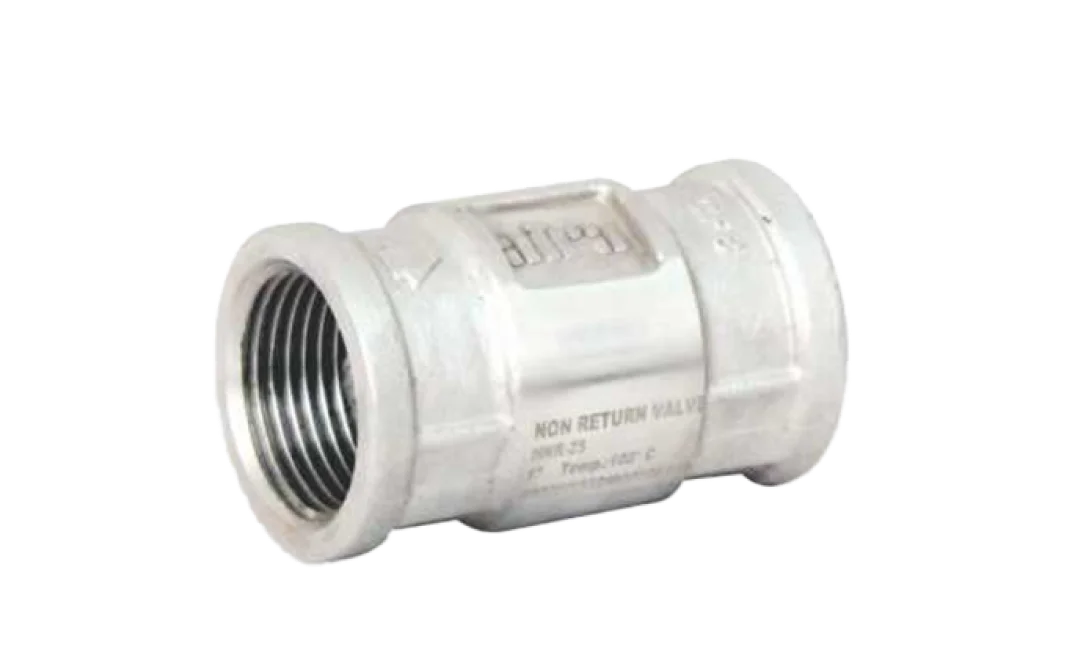
Non return valves, also known as check valves, are crucial components in water and gas systems, ensuring the safe and efficient flow of fluids or gases. By allowing flow in only one direction and preventing reverse flow, these valves protect system integrity, maintain safety, and enhance performance in a variety of applications.
Functionality of Non Return Valves
The primary function of a non return valve is to prevent backflow. When fluid or gas flows in the intended direction, the valve opens automatically, allowing passage. However, if there is any attempt at reverse flow, the valve closes immediately, creating a barrier that stops the backward movement. This simple yet effective mechanism ensures that systems operate smoothly without the risk of contamination, pressure loss, or equipment damage.
Importance in Water Systems
In water systems, non return valves are vital for preventing contamination and ensuring the safe supply of clean water. They are commonly used in:
- Plumbing Systems: To prevent wastewater from flowing back into the clean water supply, which could lead to health risks and violations of safety standards.
- Irrigation Systems: To ensure consistent pressure and prevent water from draining back into the source, improving efficiency.
- Fire Suppression Systems: To maintain pressure in fire sprinkler systems, ensuring they are always ready for emergencies.
Additionally, non return valves protect pumps and other critical equipment from damage caused by reverse flow or water hammer, a phenomenon that occurs when the flow of water is suddenly stopped or reversed.
Role in Gas Systems
Non-return valves are equally essential in gas systems, where backflow can pose serious safety hazards. These valves play a key role in:
- Industrial Pipelines: Preventing the mixing of different gases, which could lead to dangerous chemical reactions or system inefficiencies.
- HVAC Systems: Ensuring that air or gas flows correctly through heating, ventilation, and air conditioning systems, improving energy efficiency.
- Compressed Gas Systems: Avoiding leaks and maintaining consistent pressure, which is critical for safety and operational effectiveness.
By preventing reverse flow, non-return valves reduce the risk of leaks and contamination, making them indispensable in both residential and industrial gas applications.
Types of Non-Return Valves
Non-return valves come in various designs to suit different applications. Common types include:
- Swing Check Valves: These use a hinged disc that swings open and closed with the flow.
- Lift Check Valves: These rely on a piston or ball that lifts to allow flow and drops to block reverse flow.
- Ball Check Valves: Featuring a simple ball mechanism, these are often used in smaller systems.
Each type has its advantages, depending on the specific requirements of the system, such as pressure, temperature, and flow rate.
Choosing and Maintaining Non-Return Valves
Selecting the right non-return valve is crucial for optimal performance. Key factors to consider include the type of fluid or gas, system pressure, temperature, and the materials used in the valve construction. Stainless steel, brass, and plastics are common materials, chosen based on the operating environment and medium.
Regular maintenance is also essential to ensure that non-return valves function properly over time. Inspections should focus on cleaning, checking for wear and tear, and replacing any damaged components.
Conclusion
Non-return valves are indispensable in water and gas systems, providing a reliable solution to prevent backflow, maintain system integrity, and ensure safety. From safeguarding clean water supplies to preventing gas leaks in industrial pipelines, these valves play a critical role in various applications. By understanding their functionality, selecting the right type, and ensuring proper maintenance, you can maximize the benefits of non-return valves and keep your systems operating efficiently and safely.